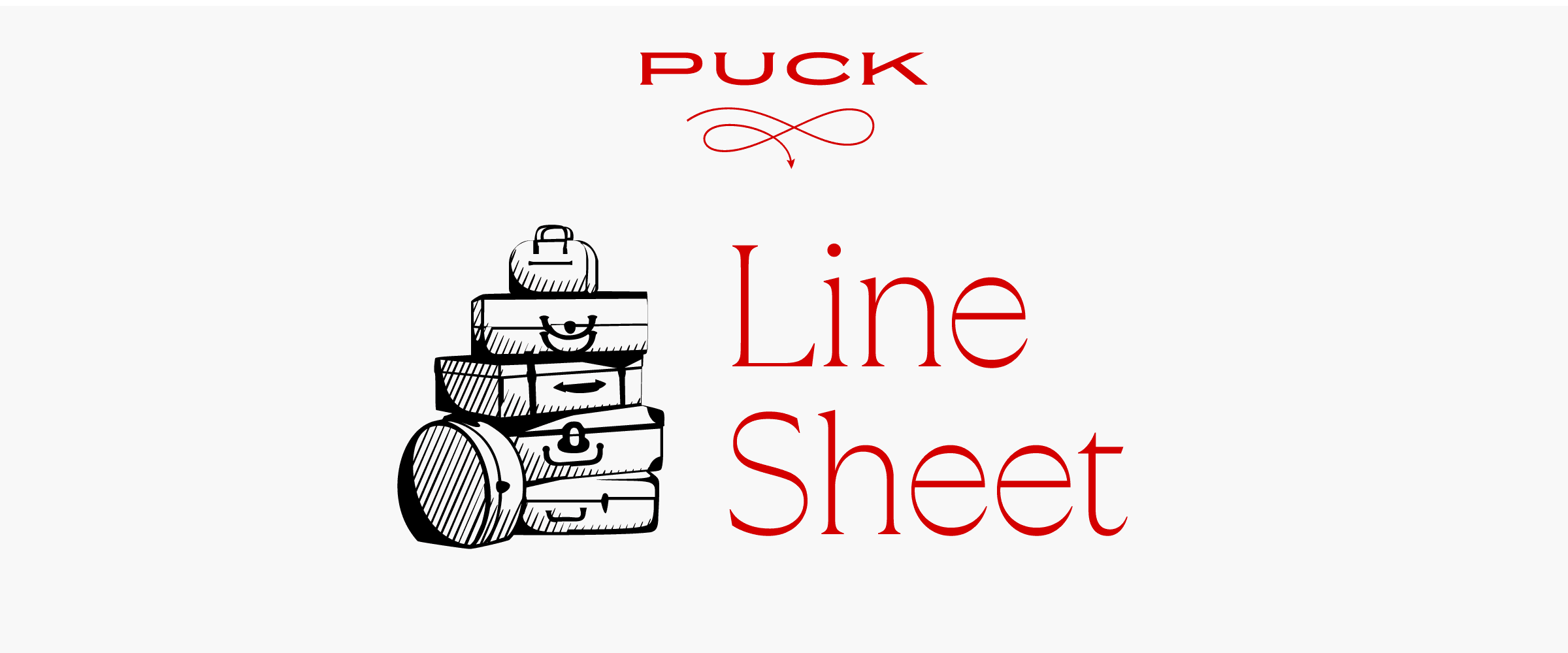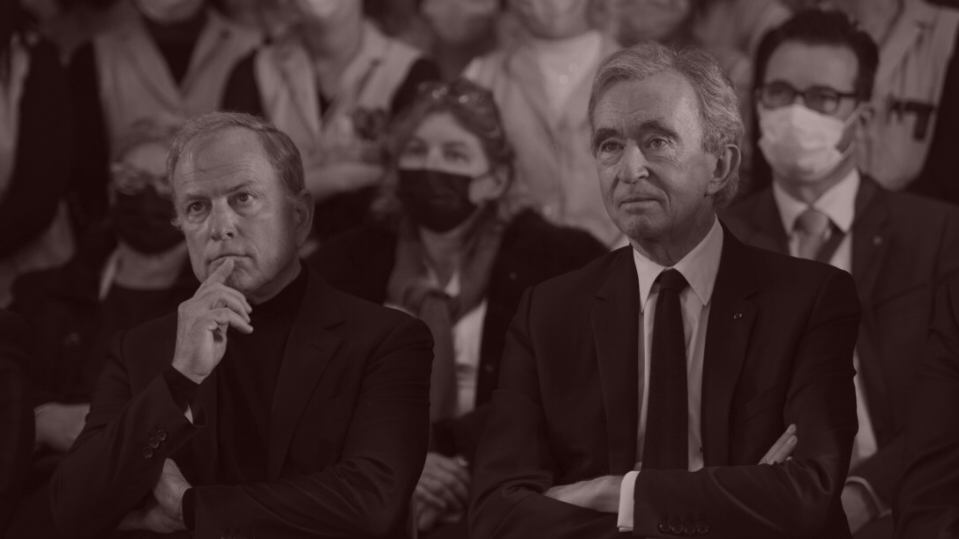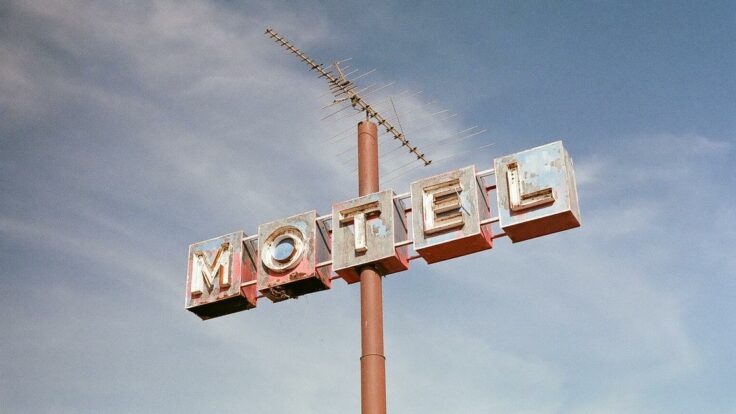 |
|
Hi, and welcome back to Line Sheet. I’m feeling good. Finally got back to trampoline class after months away. I love the Los Angeles boutique fitness scene.
If you, too, are a LEKFIT defector (or a Tracy Anderson loyalist) based in this great city, why not consider joining me on Monday, June 3, at 7 p.m. PT for a very special evening at the Roosevelt Hotel? I’ll be moderating a conversation between the costume designers from five of HBO and Max Originals’ top shows—Hacks, The Gilded Age, The Righteous Gemstones, The Sympathizer, and True Detective: Night Country—and then we’ll have a drink. Sign up here.
🚨🚨The programming note you’ve been waiting for: Tomorrow on Fashion People, I’m joined by Plum Sykes, the famous journalist and author of the new novel Wives Like Us. (You might know her from Bergdorf Blondes, or decades of writing in Vogue.) We had a blast talking ’90s fashion, Bret Easton Ellis, leaving New York, and plenty more. Subscribe to Fashion People to ensure you don’t miss it.
In today’s issue, I’ve got more scoops from the world of LVMH, plus chatter from Cannes (which is more about fashion than ever), a bit of feedback from Condé Nasties former and current, and, as always, what I’m reading. Still haven’t subscribed to Puck? You’re hilarious. Get over yourself and pay us.
And please, send me mailbag questions for Monday! Thank you.
Mentioned in this issue: Bernard Arnault, Michael Burke, Condé Nast, Pam Drucker Mann, Roger Lynch, Louis Vuitton, LVMH, Alessandro Michele, Cannes fashion, Saint Laurent, Sidney Toledano, Delphine Arnault, Hedi Slimane, Fendi, Dior, Michael Rider, and many more…
- Wham Bam Thank You, Pam: I received some impassioned emails from the halls of Condé Nast and beyond regarding the impending exit of chief revenue officer Pamela Drucker Mann, who decided to quit after she’d digested the harsh reality that she was not going to get Roger Lynch’s job. Yes, Pam is a complex character—a former air freshener who eventually replicated some of the bad behavior of her predecessors. That said, the company is in a huge hole without her.
Some are wondering if Lynch will promote Craig Kostelic, the current chief business officer, into Drucker Mann’s role. Kostelic was Drucker Mann’s Jared Kushner of sorts—superficially polite, untested, obsequious—and is the keeper of much of the institutional knowledge she will leave behind. Drucker Mann ascended by being an inside player, which was a shrewd move after the company brought in Jim Norton to run the sales organization, a catastrophic decision that undercut then-C.E.O. Bob Sauerberg’s credibility. The Norton Nightmare reminded the Condé Nast corporate suite of the importance of relationship-based selling at the company. But it’s hard to imagine Lynch entrusting a billion-dollar business to Kostelic, who doesn’t have the elan and stature. On the other hand, Lynch may have no other choice.
Meanwhile, a former Condé editor wrote to express disbelief that some editorial employees didn’t know of Drucker Mann before her departure last week. “Some folks below the waterline seemed to relish being willfully oblivious to how a place like Condé keeps the lights on despite opportunities to be enlightened,” this person said. “The union and remote work have definitely widened the gap between the info haves and have-nots, but I’d have been embarrassed to work at Condé in some sort of ‘senior’ edit role and say I didn’t know of Pam. … Thanks for feeding my sicko P.T.S.D. fascination with the Condé soap opera.” Well, I’d said fairly senior… but sure, point taken. And, you’re welcome.
- The Cannes Fashion Festival: In the world of celebrity dressing, the Cannes Film Festival might be more impactful than the Oscars or the Met Gala. The thing drags on forever (two weeks), and there are what feels like dozens upon dozens of photocalls—often happening in broad daylight, so you can see every inch of what every person is wearing. In other words, there are simply more opportunities to get your brand out there.
And yet, the red carpet only represents a fraction of fashion’s presence at the festival, which ends Friday. Last Sunday, Kering hosted its annual Women in Motion Awards, where NBCUniversal’s Donna Langley was honored. That same night, Lanvin and Charles Finch hosted a dinner at Fred L’Ecailler honoring Paul Schrader and Valeria Golino. (Whit Stillman was there.) Most crucial, though, was the outsize influence of Saint Laurent Productions, which screened not one, not two, but three films: Emilia Perez (starring Zoe Saldaña and Selena Gomez), David Cronenberg’s The Shrouds (Diane Kruger, Vincent Cassel, Guy Pearce), and Parthenope (Celeste Dalla Porta, Gary Oldman). For each film, Saint Laurent designer Anthony Vaccarello is listed as the “costume artistic director,” although all three films had a costume designer as well.
I hear that there was quite a lot of chatter about this arrangement, at least among the fashion crowd attending the festival. It’s wonderful that Saint Laurent funds these projects, sure, but do they really provide an R.O.I. for the brand? (The point is to participate in making culture rather than simply driving consumption.) Conversely, does the backing of Saint Laurent turn these movies into glorified advertisements?
Not to get all Orwellian on you, but isn’t all art propaganda? Is this any different, really, from what Loewe and Jonathan Anderson did with Challengers? “From a film perspective, there are far more ridiculous or shady sources of film funding,” said one friend who covers the film industry. “And who really cares—movies are expensive. So thank you, Saint Laurent, for supporting cinema!”
|
 |
| Weakened at Bernie’s |
| Notes on the downsizing of Arnault’s mythmaker and billion-dollar disrupter Michael Burke. Plus: Ralph’s Rider returns to the LVMH stable. |
|
|
|
| A friend of Michael Burke wrote to me the other day to express his disagreement with my characterization of the longtime LVMH executive, who recently stepped back as C.E.O. of the conglomerate’s fashion group. In my previous piece, I’d referred to Burke as “occasionally cruel”—a description that emerged from conversations with multiple current and former employees and peers. Sure, Burke is tough, this person said. But cruel? This person suggested I was being fed a millennial’s interpretation of a management style from another generation.
Cruel or tough, there’s little doubt that Burke was foundational in the creation of the LVMH mythology during the past 40 years, typically by making his boss, mastermind Bernard Arnault, appear as cunning and brilliant as his carefully groomed wolf-in-cashmere persona required. Sales at Louis Vuitton, which Burke ran for more than a decade, were more than €20 billion by the time he left the role in 2023. That’s remarkable, considering that LVMH’s overall revenue was just €28 billion a decade earlier, in 2012, when he took over LV.
So why was Burke removed from his fashion group C.E.O. role—the capstone to his decades of service to Arnault—after just a few months in the job? I reported last week that there were two theories. The first was that there was some sort of personal reason to explain the hasty move. The second coalesced around his inability to land Alessandro Michele at Fendi, in particular, and broader Fendi problems, in general. But as it turns out, perhaps the reasons were more interpersonal than personal. Rather than taking a quiet pre-retirement victory lap, Burke wanted to make more significant changes to the organization that ultimately put him on the wrong side of the paterfamilias.
The fashion group, after all, contributes only around €15 billion of LVMH’s overall €86 billion in revenue. (By comparison, the larger fashion and leather goods division, which is the fashion group plus Louis Vuitton and Dior, LVMH’s biggest fashion brands, generates some €42 billion.) The bulk of that number comes from Vuitton and Dior, which are run independently from Marc Jacobs, Celine, Fendi, Stella McCartney, Patou, and the rest of the fashion group. Sure, €15 billion is not nothing. But managing a collection of sizable, if not enormous, companies is different than managing one mammoth operation. And Burke, oft-credited with bringing Virgil Abloh into the LVMH fold, is said to have detested the idea of maintaining the status quo.
It sounds like Burke wanted to make sweeping—but in his mind, necessary—changes within the group, and that there was internal resistance to the moves, or at least the approach. On May 16, it was reported that Burke would be “stepping back,” and that Sidney Toledano, the former Dior C.E.O. who ran the fashion group prior to Burke, and Delphine Arnault, the eldest and most accomplished Arnault child, would be stepping in.
In many ways, the shake-up speaks to the group’s conservative DNA: Toledano, at the end of the day, is a traditionalist, and Delphine is a soldier. While Burke is still in the mix—he hasn’t been excommunicated altogether—I hear that he is no longer working with Tiffany, either, where he was named chairman shortly after LVMH acquired the American jeweler in 2021.
|
|
|
| As for those sweeping changes, I suspect Burke wanted to shake up the designer roster. Under Toledano, the fashion group’s creative director appointments were fairly perfunctory. Yes, there was Toledano’s coup of wooing back Hedi Slimane from Kering in 2018, after the superstar designer had fallen out with LVMH a decade earlier. But after that, Toledano’s appointments, including Matthew M. Williams at Givenchy and Felipe Oliveira Baptista at Kenzo, fell flat. Burke had the opportunity to appoint new talent at Givenchy, Celine, and Fendi. There were also rumors of interest in selling Marc Jacobs, which LVMH flatly denied.
If this is indeed the end of Burke’s brief time in the C.E.O. chair, he will likely be remembered for two incidents: the Michele loss, of course, and the appointment of Michael Rider to Celine. Rider, who leaves his post at Ralph Lauren at the end of May, is said to have already started recruiting for his return to LVMH, where he spent a decade under the inimitable Phoebe Philo. (All that speculation last week that he might be headed somewhere other than Celine is rubbish, I’m told by people who know him.)
I must admit, I’ve wondered if Rider will return Philo’s accent aigu to the brand’s name, in honor of founder Céline Vipiana. It would be fashion’s equivalent of fanfic, which is to say I don’t think he’d dare. What I do know is that folks are excited by Rider’s appointment. Yes, it’s another gay white man in a creative director role—LVMH will certainly receive criticism online for the choice—but at least he is young and cool, and American. And definitely not an Abloh sycophant like some people we know.
Rider achieved the impossible at Ralph Lauren. He made things happen at a place where nothing, and no one, budges, ever. Which makes him perfect for LVMH, a place where change is not currently in fashion.
|
|
|
| Jacob Gallagher did a good job breaking down what went wrong at Hodinkee over the past few years. (We’ll talk about it in a future episode of Fashion People, I promise.) On the agenda: Did Hodinkee prove, once and for all, that the content-to-commerce model doesn’t work? (The overlap between the people buying watches on the site and people reading the site was never that big.) We should recognize that Hodinkee changed how people think about watches, and inspired them to buy watches online. It essentially created a new market. Finally, I can’t believe how much press a tiny company gets from places like The Wall Street Journal and Bloomberg. Hodinkee is the Outdoor Voices of hard luxury. [WSJ]
Scenes from the Financial Times’ Business of Luxury Summit: Prada C.E.O. Andrea Guerra came off as super humble, emphasizing that Miuccia Prada is his priority. When asked about Armani, Guerra said the company is not hunting for acquisitions. Ssense was referenced both by Sequoia Capital partner (and former Vogue China editor-in-chief) Angelica Cheung and my guy David Fischer, founder of Highsnobiety. “They get their customer and brand position,” my stringer told me. The ever-chic Francesca Bellettini talked about the importance of patience and taking risks, while her colleague, Bottega Veneta C.E.O. Leo Rongone, shared details of his fancy new palazzo opening next month in Venice that’ll cater to top spenders. Overall, the conference looked pretty fun, and I would love to cover it next year if Jo wants to invite me.
Anthroooooo! [MarketWatch]
Basketball will always be the catalyst for fashion people getting into SPORTS. (Okay, that and tennis.) [Shop Rat]
The title of this article should have been, “What Lengths Will We, the Editors of GQ, Go to Make Evan Kinori Famous?” I kid, I kid, love to everyone involved. [GQ]
Plum wrote about the rise of “executive butlers.” What I am realizing is that I need a butler. [New York Times]
Marie Claire editor-in-chief Nikki Ogunnaike has a new pod. [Nice Talk]
R.I.P. Bruce Nordstrom. [New York Times]
Love this Polly Mellen image shot by Pamela Hanson and styled by Phyllis Posnick. [W magazine]
One of Carolyn Bessette–Kennedy’s Yojhi dresses is going up for auction. It is the perfect dress. [Rachel Tashjian’s Twitter]
Demna made some merch (and a video game) with his French composer-slash-longtime-collaborator husband, also known as BFRND, also known as Loïk Gomez. [Nylon]
Maxim de Turckheim is the new C.E.O. of Tabayer. [JCK]
The CFDA launched a menswear design scholarship in honor of Nick Sullivan. [Get Involved]
Ralph Lauren beat estimates, has a new C.F.O., this year won’t be as good as they had hoped. [BoF]
|
|
|
| And finally… I wrote this while listening to the Challengers soundtrack. Can you tell?
Until Monday,
Lauren
|
|
|
|
| FOUR STORIES WE’RE TALKING ABOUT |
|
|
|
|
|
 |
|
|
|
Need help? Review our FAQs
page or contact
us for assistance. For brand partnerships, email ads@puck.news.
|
|
You received this email because you signed up to receive emails from Puck, or as part of your Puck account associated with . To stop receiving this newsletter and/or manage all your email preferences, click here.
|
|
Puck is published by Heat Media LLC. 227 W 17th St New York, NY 10011.
|
|
|
|







